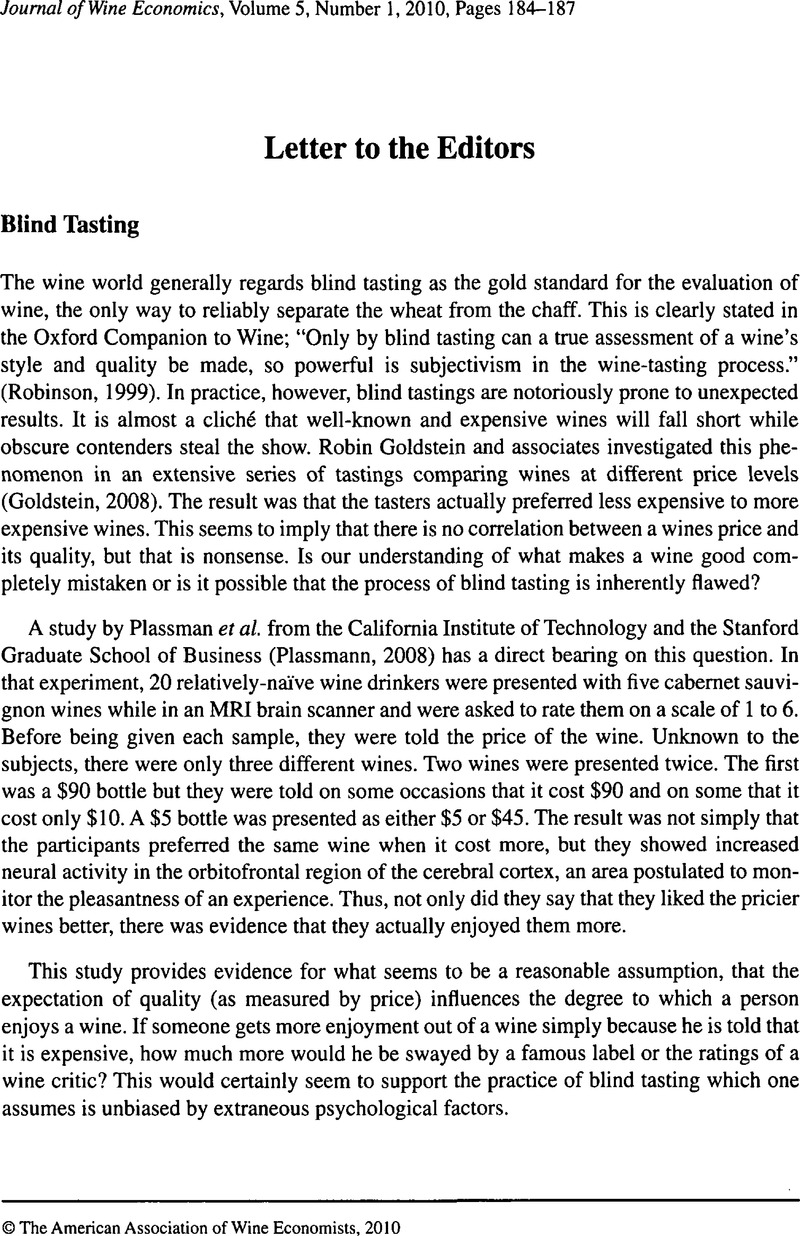Crossref Citations
This article has been cited by the following publications. This list is generated based on data provided by Crossref.
Lewis, Geoffrey
and
Zalan, Tatiana
2014.
Strategic Implications of the Relationship Between Price and Willingness to Pay: Evidence from a Wine-Tasting Experiment.
Journal of Wine Economics,
Vol. 9,
Issue. 2,
p.
115.
Lewis, Geoffrey
Charters, Steve
Lecat, Benoît
Zalan, Tatiana
and
Wolf, Marianna McGarry
2019.
The impact of setting on wine tasting experiments.
International Journal of Wine Business Research,
Vol. 31,
Issue. 4,
p.
578.
Kaimann, Daniel
and
Spiess Bru, Clarissa Laura Maria
2024.
Sounds too feminine? Blind tastings, phonetic gender scores, and the impact on professional critics.
Journal of Wine Economics,
Vol. 19,
Issue. 2,
p.
113.
Paramio, Alberto
Cruces-Montes, Serafín
Gómez-Carmona, Diego
Romero-Moreno, Antonio
and
Zayas, Antonio
2024.
Emotional response to sherry wines and its relationship with emotional intelligence, level of expertise and gender.
Food Research International,
Vol. 192,
Issue. ,
p.
114835.
Oliveira Moreira, Diogo
Paulo Reis, Luís
and
Cortez, Paulo
2024.
Using Machine Learning to Predict Wine Quality and Prices: A Demonstrative Case Using a Large Tabular Database.
IEEE Access,
Vol. 12,
Issue. ,
p.
182296.



